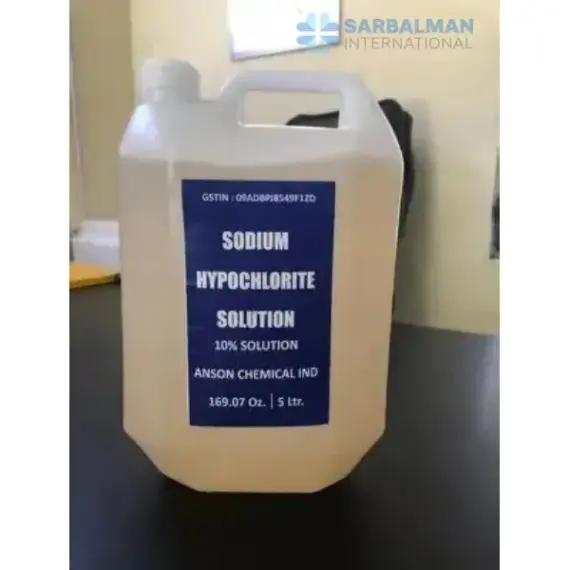Sodium Hypochlorite
Free!
Sodium hypochlorite is a liquid chlorine disinfectant for water treatment, surface sanitation, odor control, and algae prevention. It delivers broad-spectrum kill, quick action, and simple dosing at a low operating cost. Suitable for plants, pools, hospitals, and cleaning crews when used at approved dilutions. A practical choice when you need proven disinfection, easy monitoring of free chlorine, and dependable results across diverse environments.
Description
Sodium hypochlorite is a fast-acting oxidizing disinfectant used to kill bacteria, viruses, fungi, and algae. Supplied as a clear to pale yellow liquid, it is commonly formulated between 5% and 15% available chlorine. When diluted in water, it releases hypochlorous acid, the active species that sanitizes hard surfaces, treats potable and waste water, and controls biofilm. It works quickly, leaves no persistent residue, and is easy to dose with manual or automated feed systems.
Key features and benefits:
• Broad-spectrum disinfection for healthcare, food processing, hospitality, and public facilities
• Effective at low cost with predictable dose–response
• Compatible with routine cleaning programs and most dosing pumps
• Deodorizes by oxidizing odor-causing compounds
• Readily measurable free chlorine for simple quality control
Common uses and industry applications:
• Water treatment plants and wells for primary or secondary disinfection
• Wastewater odor control and sludge handling
• Food and beverage plants for surface sanitation and CIP rinses where permitted
• Hospitals, clinics, schools, gyms, and offices for routine surface disinfection
• Swimming pools and cooling towers for algae and microorganism control
• Laundry bleaching and stain removal
• Dental and laboratory settings for instrument and surface decontamination per local protocols
How it compares:
• Versus calcium hypochlorite: no dissolving step and easier automated dosing, though shorter shelf life.
• Versus chlorine gas: simpler handling and storage, with fewer regulatory controls in many settings.
• Versus quaternary ammonium or peroxide cleaners: broader public familiarity and inexpensive monitoring by free-chlorine tests.
Quality and compliance notes:
• Drinking-water applications commonly reference AWWA B300 for hypochlorites and NSF/ANSI Standard 60 for treatment chemicals.
• For food-contact or healthcare use, follow local regulations, approved concentrations, and contact times.
Safe handling:
• Corrosive oxidizer. Store cool and shaded in vented containers.
• Never mix with acids or ammonia. Use appropriate PPE and ensure good ventilation.
Choose sodium hypochlorite for reliable, scalable disinfection across municipal, commercial, and institutional operations.




